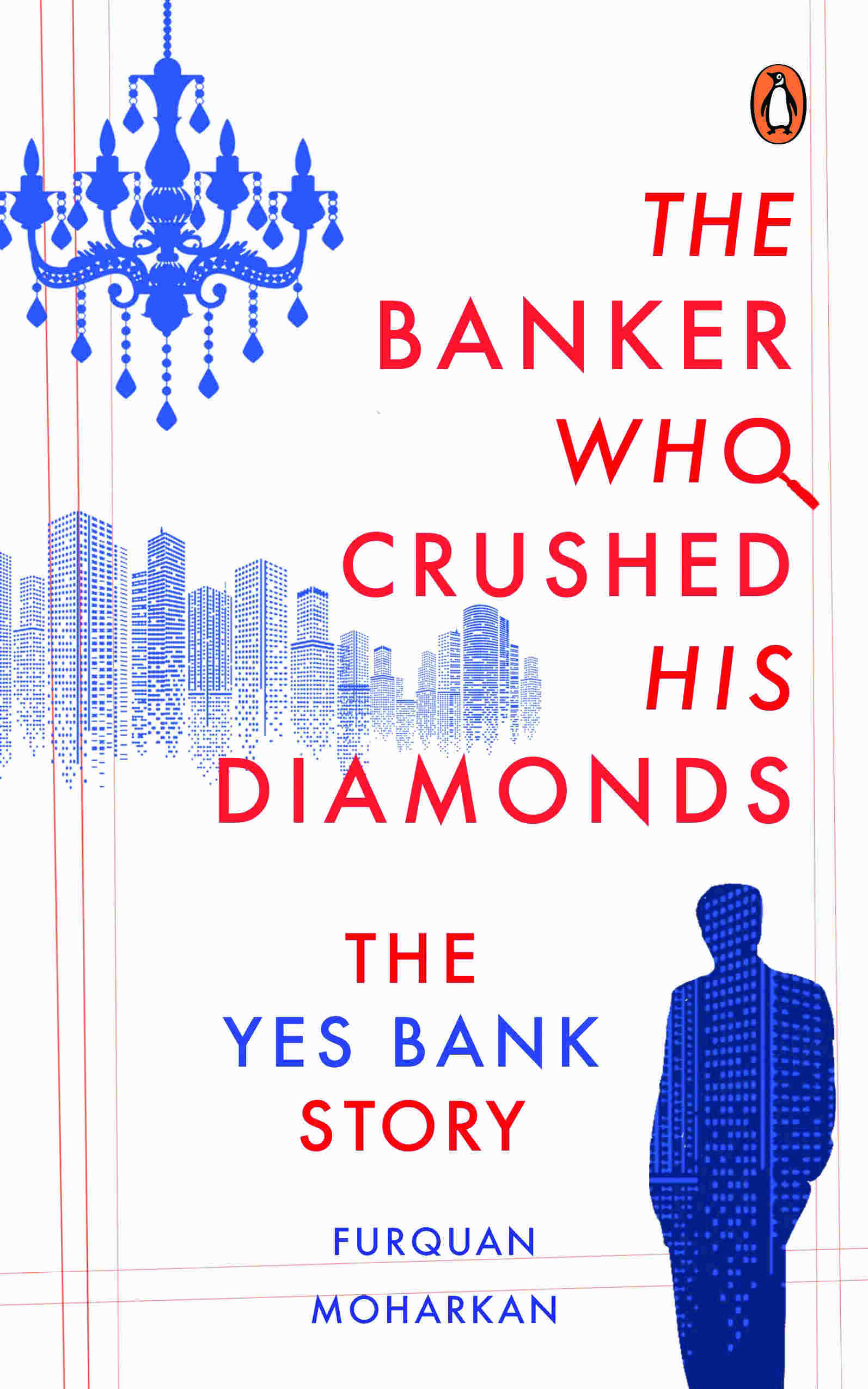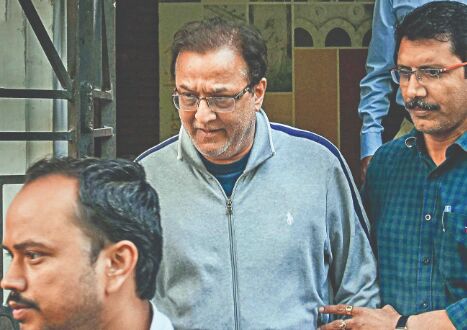"The Banker Who Crushed His Diamonds" | First signs of trouble
The Banker Who Crushed His Diamonds uncovers the rot deep within YES Bank’s glittering success story. It serves as much as a cautionary tale as it exposes the chink in India’s armour against financial chaos; Excerpts:
Author: Furquan Moharkan
Publisher: Penguin
In September 1957, a Punjabi family in Delhi was blessed with a baby boy—a boy who would go on to become famous and then gain notoriety. This boy happened to be Rana Kapoor, who sixty-three years later, is in the firm grip of the Enforcement Directorate (ED) for alleged money laundering.
As he grew up, the boy developed connections with the rich and powerful of India. But it was not just connections that he was banking upon; to his credit, he was smart. After all, graduating from the prestigious Shri Ram College of Commerce (SRCC) is not everyone’s cup of tea.

After his graduation in 1977, Rana went ahead and obtained an MBA degree from Rutgers University in New Jersey, USA, by 1979. It was during this period that he interned in Citibank—a stint that would have far-reaching consequences on Rana’s decisions going forward. At Citibank, he was mesmerized with the glamour and culture of the global banking world and felt a burning desire to set up something on his own. Later, when he founded a bank of his own, Rana used the same colours in the logo of YES Bank as in Citibank’s. While the red colour in the Citibank logo symbolizes passion, joy, acceptance and the determination of the company, the blue stands for its dominance, excellence, approachability and elegance.
After his graduation, he started scouting for opportunities. Kapoor, in one of his interviews, had said that he had applied to three banks after passing out of Rutgers University: Citibank (where he had interned), ANZ Grindlays and Bank of America.
He is said to have been amongst the three candidates shortlisted by ANZ Grindlays. But he once claimed in an interview with financial daily Business Standard that he was rejected since the other two were sons of senior bureaucrats, a claim which sounds dicey given the accounts of the people he later worked with. Meanwhile, Bank of America, which was his last preference, offered him a job and he stayed there for fifteen years.
It was here that he was moulded into what he would later on become. He joined as a management trainee in the bank and, owing to his street-smart ways, climbed up the ladder fast, winning many awards during that time. In fact, the people who worked in Bank of America at the time say that he was the blue-eyed boy of then India head Vikram Talwar. Rana, by the early 1990s, rose up to head the corporate banking of Bank of America in India. With his cabin right next to Talwar’s, Rana was considered the defacto number two of the bank in India. Many say that he was result-oriented—no matter the cost—a trait usually associated to bankers on Wall Street.
However, his dealings in Bank of America never seemed suspicious to his colleagues. ‘Given the scrutiny in the Bank of America, it was impossible for him to do any fraudulent transaction. I don’t think he would have done it there. But he was always on the borderline,’ a colleague who had worked with him there told me.
What were those borderline fraud symptoms that he had shown over the years? Well, probably lobbying—the two things which seem to be the key to the rise of YES Bank later.
‘He was known as a fixer. He was one of those officers who knew people in power. He knew bureaucrats. So, he used to get things done quickly,’ one of his colleagues who had observed his spark confessed.
But, at the bank, his performance was excellent. In 1990, he left the circles of India’s foreign banks bewildered. He had been able to get on board a big account for Bank of America. The account was that of the US consular business in India, which until then had shared a decades
old relationship with its rival foreign bank—Citibank. The account, going by the vivid memories of the people working in Bank of America
back then, was roughly pegged at
Rs 200 crore—a big amount for a foreign bank in India at that point in time.
In fact, he was presented the Eagle Pin by the chairman of Bank of America in 1990, the highest professional recognition for consistent performance and excellence at Bank of America, amongst several other enterprising achievements.
This was the time around which he got into the groove. But as all good things come to an end, so did his honeymoon with Bank of America. In 1992, a scam erupted that shook the fundamentals of the Indian financial system. Harshad Mehta, the poster boy of stock markets, had siphoned off Rs 1000 crore from the country’s public sector banks and pumped it into the markets—causing an abnormal annual return of 274 per cent on the BSE.
Mehta thrived on the loopholes in the system. Back then, the statutory liquidity ratio—minimum percentage of demand and time deposits that banks have to maintain in the form of bonds or other liquid assets—stood at 38.5 per cent. In case of temporary surge in deposits, rather than actually going out in the market and buying bonds, the banks back then would resort to ready forward deals (RFDs)—short-term inter-bank lending through buying and selling of government bonds. As the ticket size of actual bonds was far higher than those of bonds, instead of actually transferring the bonds the banks would transfer something called bank receipts (BR)—an ‘I owe you’ note. In a normal RFD, there would be only two banks involved. Securities would be taken from a bank in exchange for cash. All this was facilitated by brokers like Mehta. Since the market was nascent back then, brokers slowly creeped into the settlement process of these RFDs. Mehta managed to convince the banks to have the cheques drawn in his name. He would then manage to transfer the money deposited in his account into the stock markets, which, in turn, caused a bull run in the market.
Once the Harshad Mehta scam was unearthed, other than giving statutory powers to then four-year old Securities Exchange Board of India (SEBI) and the mandatory arrests of the people involved in the fraud, there was a much-required churning in the Indian banking system. Some top executives stepped down, some were suspended, some were dismissed while others were transferred.
Talwar, Rana’s favourite boss, was among those who were transferred to San Francisco. Though there was no conduit that took place under Talwar, a senior journalist who covered the SEBI scam back then said that Rana’s flamboyance helped his image in front of Talwar, who himself was flamboyant.
‘The memory I have of Vikram Talwar at Bank of America is very hazy. It is more from a picture created by those who knew him or had met him,’ the journalist who covered the scam told me during an interview for this book. A link seems to have been created and reinforced after Rana started becoming a name in the business world, according to the veteran.
Vikram Talwar did mentor and influence many people, like Vishwavir Ahuja of RBL Bank who was earlier with Bank of America. Talwar was, in fact, his local guardian when he was studying at Michigan University.
The suggestion here is that the flamboyance in Rana Kapoor’s stance came from, or was modelled on, Talwar. But that is where the similarities end. ‘Talwar had his style and flamboyance. He also had charm and didn’t annoy or offend. He had a way of working with people,’ say many people who worked with both of them.
In an interview with Patricia Olsen of the New York Times, Talwar said that he’d learnt an important lesson from his parents, a working couple: how to work with people and how to deal with co-workers. ‘No one should see you as arrogant or artificial,’ he had said.
Rana, on the other hand, lacked Talwar’s charm. He could ‘offend’ and ‘rub people up the wrong way’ according to Bank of America insiders.
Rana seemed to have his own style probably influenced by Rutgers University rather than Talwar, the same veteran journalist told me.
Excerpted with permission from The Banker who crushed his Diamonds; published by Penguin Random House



